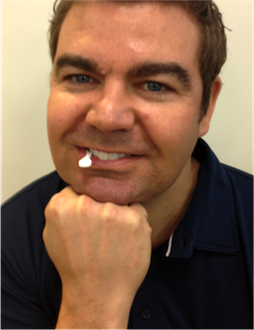Seating and Adjusting: Why is Bigger Sometimes Easier?
By Gary DeWood on June 19, 2012 | 6 comments The Enigma: Shortly after I seated the case shown here I was talking with a friend about the experience and marveling at how little occlusal adjustment I had to complete.
The Enigma: Shortly after I seated the case shown here I was talking with a friend about the experience and marveling at how little occlusal adjustment I had to complete.
It was literally a couple of quick passes with a very slow, wet stone on one spot and then Dialite points and cups. He's had similar experiences.
The result of excellent lab process to be sure, but I must take some credit for meticulous attention to the details around the records used to mount and relate the casts to one another. In fact, my friend noted that he often found it more difficult to get that single unit to be so precise, especially when he had used a triple tray for the impression. Hmmm, you know what? I've had that experience too.
The Observation: With a full mouth case I really do get a bit OCD about the gathering of records. With a triple tray, not so much. But the triple tray has no interference from multiple parts having to mesh together seamlessly, no balancing act or trimming job to make certain that the separate models once related, actually interact. Everything is created from a single, already related unit.
The Hypothesis: I recorded the bite relationships for the case above using a fast setting registration material that required the patient to hold that occluded position for a few seconds. The triple tray recording is made using impression material that sets in five minutes. (You may use one that sets in less but I'm betting the set time is significantly greater than the bite registration you use.)
 Perhaps the difference is relaxation of the elevator muscles creating a slight discrepancy in the relationship. I've always held my impressions trays in place until they are fully set, and I've heard Bob Winter talk about holding his impression trays in place rather than asking a patient to provide the force with biting for exactly the same reason. He has experienced patients who relaxed their elevator muscles and got movement of the tray.
Perhaps the difference is relaxation of the elevator muscles creating a slight discrepancy in the relationship. I've always held my impressions trays in place until they are fully set, and I've heard Bob Winter talk about holding his impression trays in place rather than asking a patient to provide the force with biting for exactly the same reason. He has experienced patients who relaxed their elevator muscles and got movement of the tray.
The Solution: Yes, I do use triple trays when it's appropriate. There are less times when it makes sense to me these days since I am able to utilize the CEREC machine, but the use of a triple tray in an occlusion that is being treated at MIP can be the quickest and most efficient way to capture an impression and an occlusal relationship.
When it's appropriate, I now always have the patient rest their fist under their chin and rest the elbow of that arm on an arm of the chair, on a table, or in the palm of their other hand. Instructions include the need to keep the teeth tightly together.
I bet that bite relationship will be really accurate!
Gary DeWood, D.D.S., M.S., Spear Faculty and Contributing Author
Comments
June 23rd, 2012
June 23rd, 2012
June 23rd, 2012
May 13th, 2013
May 13th, 2013
May 14th, 2013